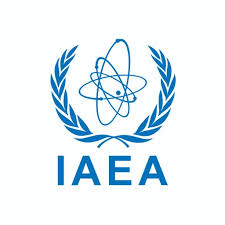IAEA technical visit at Ruse-Danube Bridge to enhance nuclear security
The visit was part of a larger IAEA project initiated in 2019 and focused on supporting the development of national, bilateral and regional responses to nuclear security events in the region.

Twenty experts from Bulgaria, Georgia, Moldova, Romania and Ukraine took part in a recent IAEA technical visit at the Ruse-Danube Bridge – a jointly staffed crossing point at Bulgaria and Romania’s shared border – with the aim of enhancing regional approaches to combatting illicit trafficking of nuclear or other radioactive material.
The four-day technical visit, in Sofia and Ruse, Bulgaria, was designed to support the efforts of Georgia, Moldova and Ukraine to strengthen regional collaboration and to enhance their national nuclear security regimes, specifically related to establishing and maintaining border nuclear security systems and measures to prevent, detect and respond to the smuggling of lost or stolen nuclear and other radioactive material.
“While the responsibility for nuclear security within a State lies with that State, insufficient nuclear security measures in one country can impact the measures in place in another country, so international and regional cooperation is imperative,” said Elena Buglova, IAEA Director of the Division of Nuclear Security.
“Effective border controls and regional cooperation in the area of nuclear security are vital for countries to protect themselves and their neighbours.”
During the technical visit, experts from Georgia, Moldova and Ukraine were able to observe how Romanian and Bulgarian counterparts implement their joint nuclear security policies and procedures to respond to, and investigate, radiation alarms and alerts at the border crossing point at the Ruse Danube Bridge. Participants were also able to exchange best practices in managing a joint border, including the use of radiation detection equipment and the development of nuclear security response procedures, and facilitated interaction with officials from neighbouring countries.
The visit was part of a larger IAEA project initiated in 2019 and focused on supporting the development of national, bilateral and regional responses to nuclear security events in the region. Nuclear security events include, for example, the theft of nuclear or other radioactive material, illicit trafficking of such material, and the misuse of this material by criminals.
“In addition to our own national measures for nuclear security, we have developed many effective procedures over the years with our Romanian colleagues to manage our shared border, including a bilateral protocol on joint control of the border crossing point at the Ruse-Danube Bridge,” said Miroslav Georgiev, Chief of the Specialized Border Control Sector, Border Control Directorate of Bulgaria “Our cooperation in this area has strengthened the measures we have in place to enhance the nuclear security of both countries.”
Countries are individually responsible for combatting illicit trafficking of nuclear and radioactive material and do this by monitoring their borders to detect and confiscate any material being moved across borders illegally. The IAEA supports countries with this by providing comprehensive guidance on border monitoring, including on the technical and functional specifications for border radiation monitoring equipment.
- READ MORE ON:
- IAEA
- Ruse-Danube Bridge
- Elena Buglova










